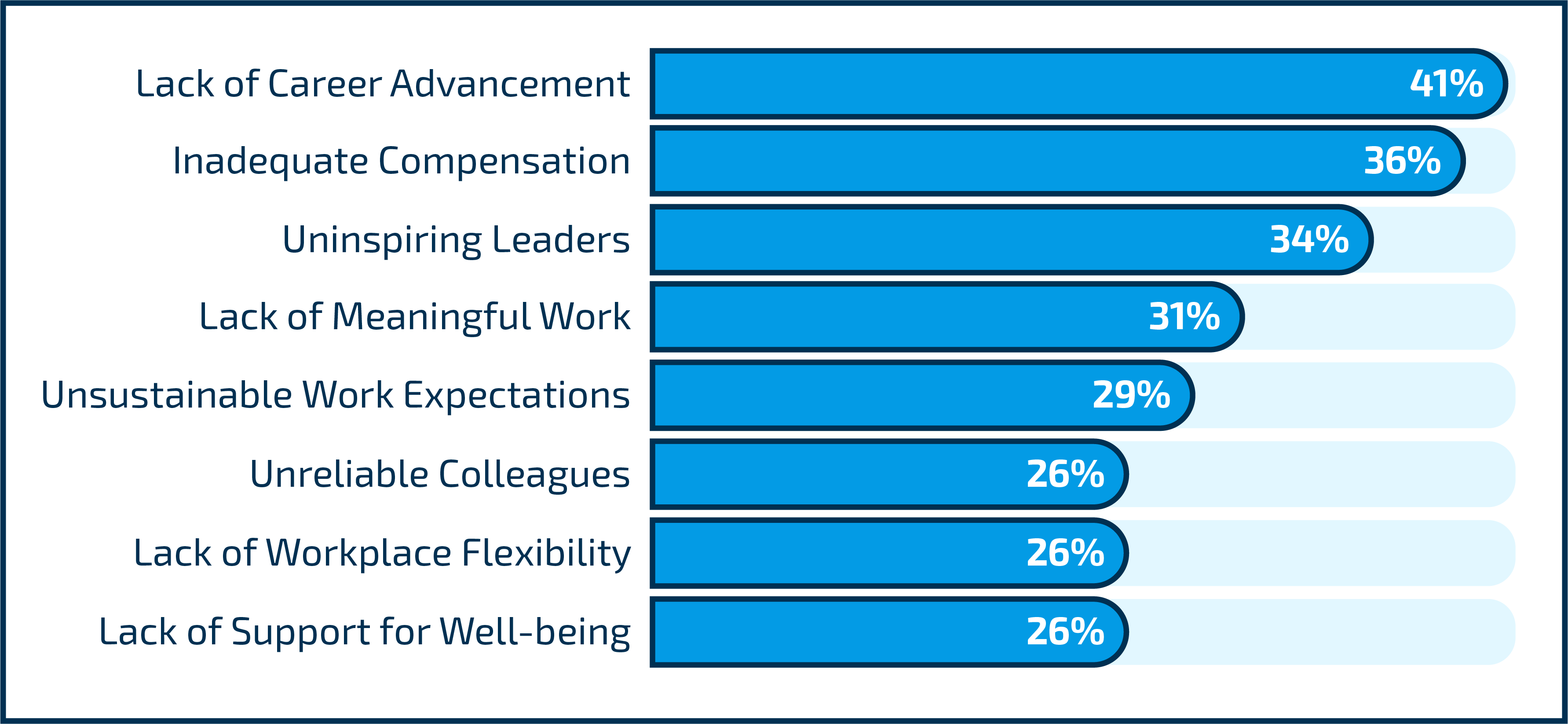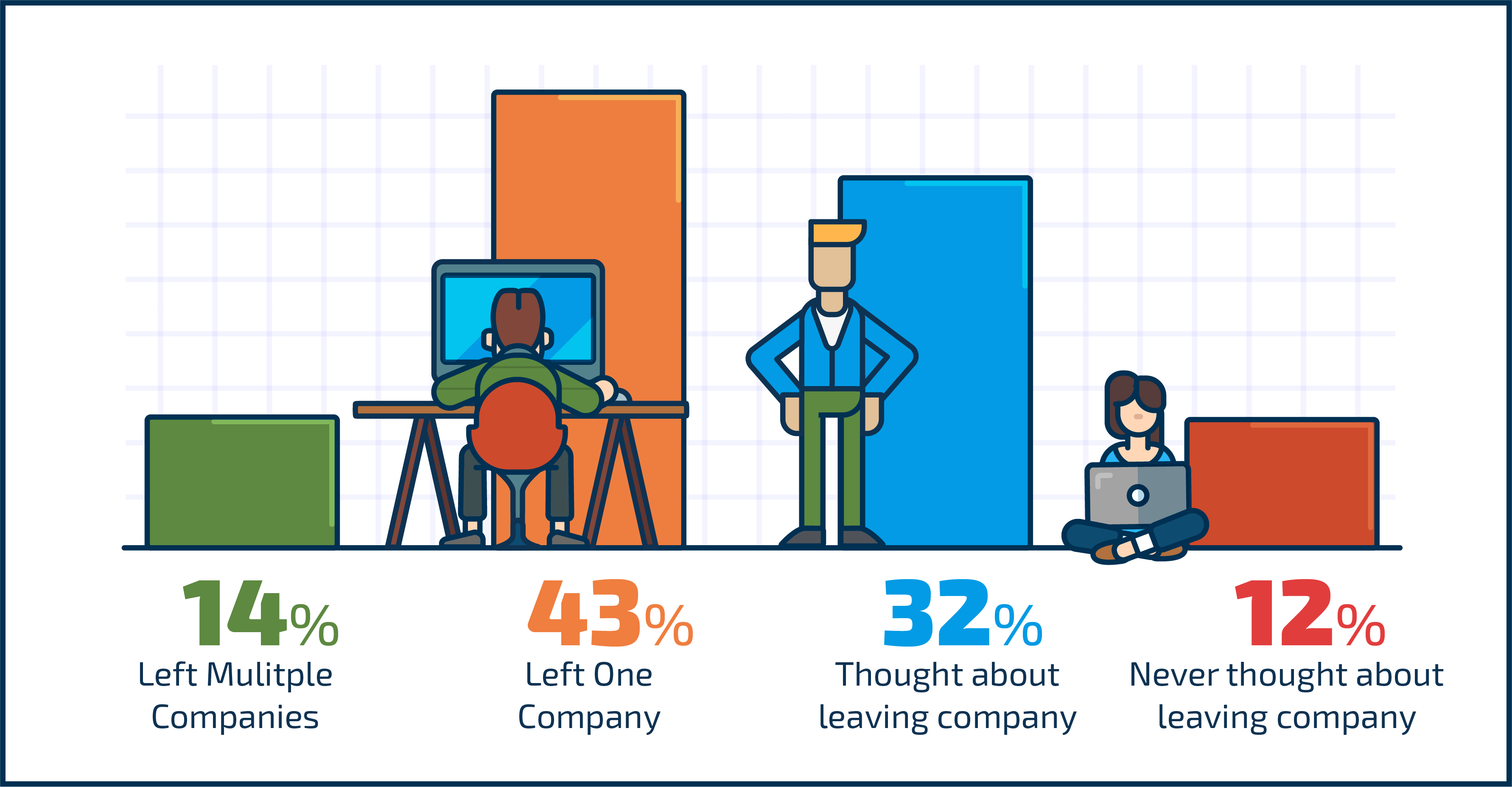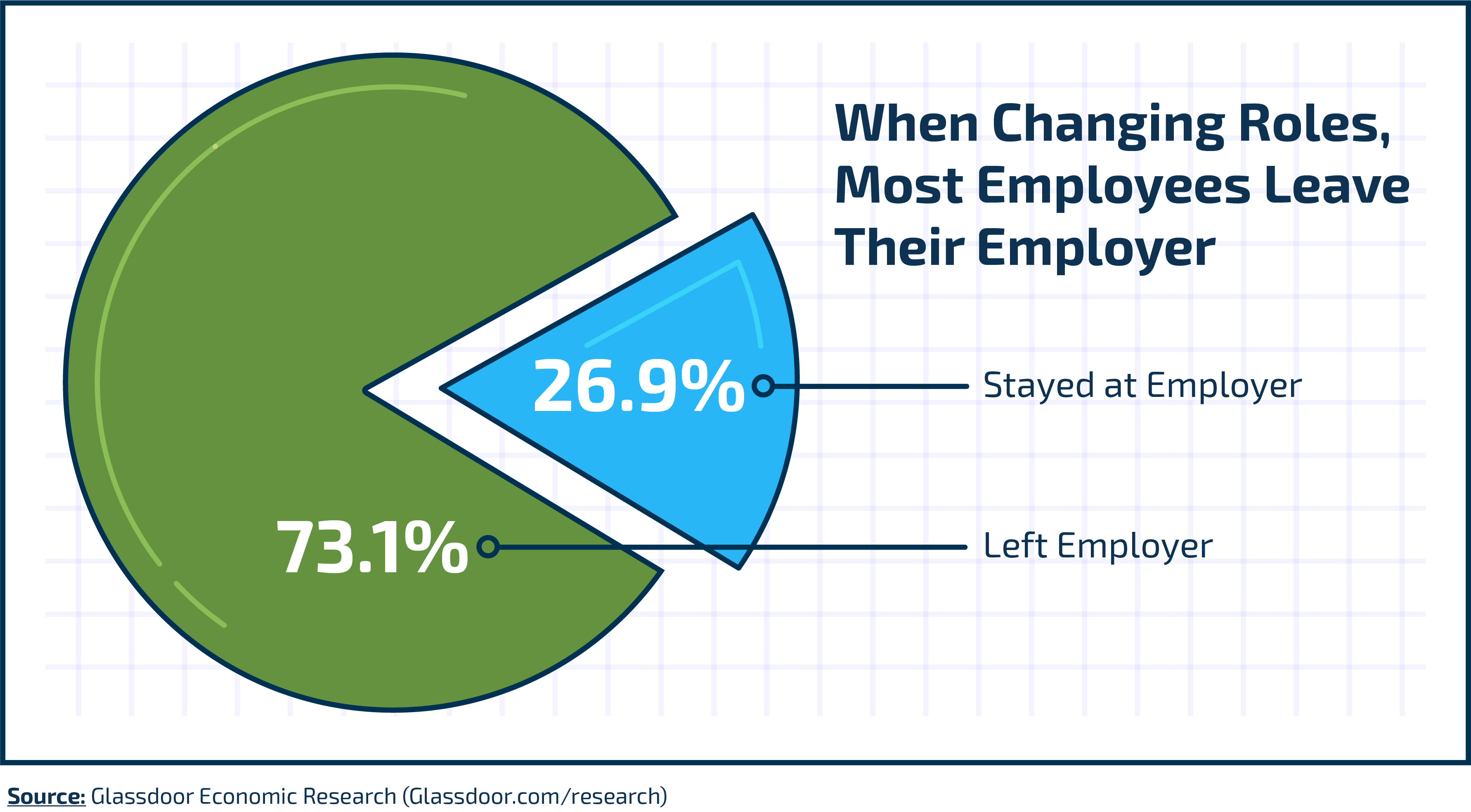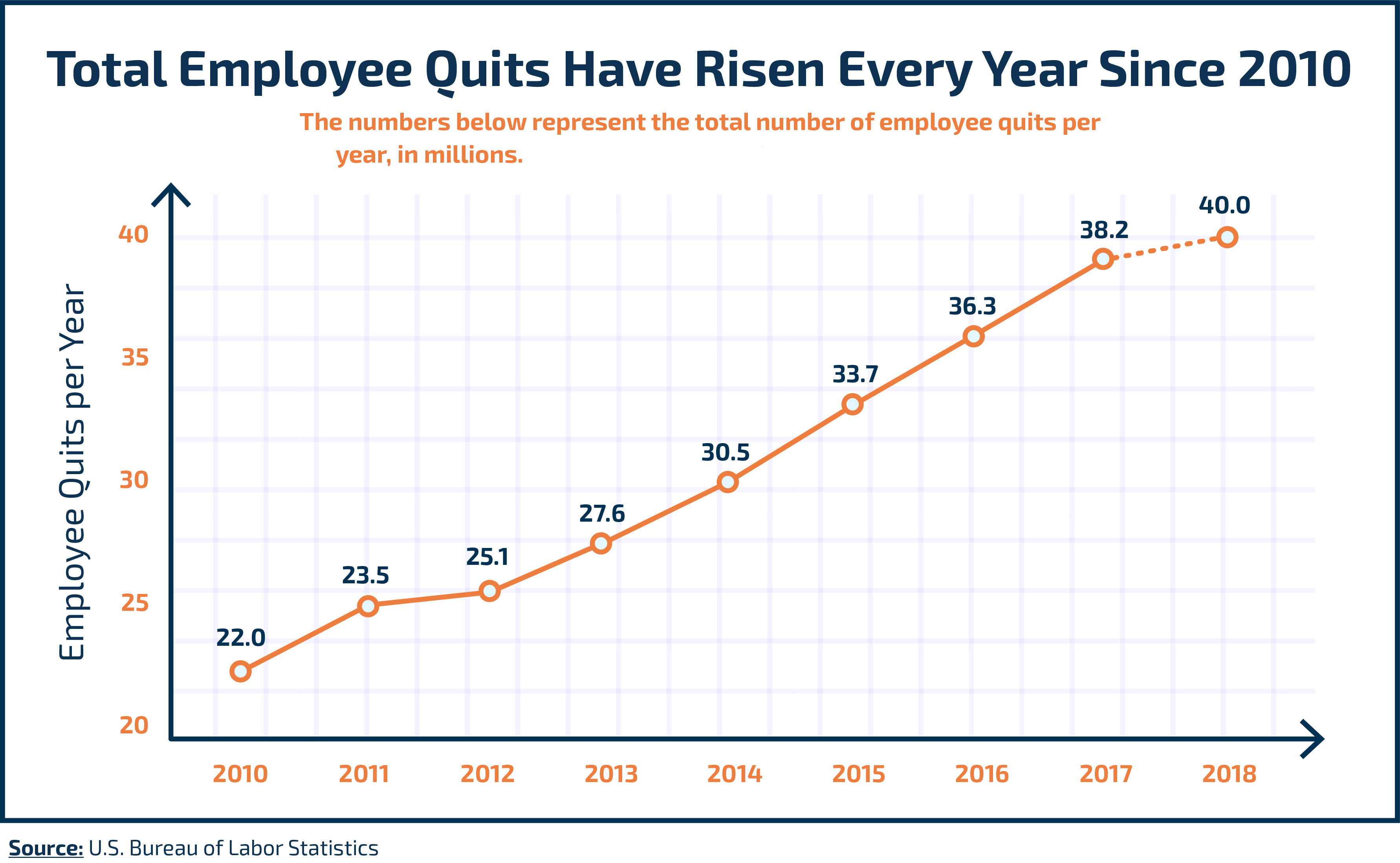By Jordie Black (Tech Writer)
One of the most important things an IT leader can do to ensure the longevity of their tech team is to understand why employees quit. It may seem obvious that employees leave for better pay, more prestigious roles, or closer proximity to loved ones, but understanding the nuances behind employee turnover is more complicated.
Data-driven insights into turnover offer a wealth of information on the factors that might lead someone to quit their job. By understanding the trends in employee departure, leaders can take steps to improve performance and reduce turnover by addressing the underlying factors. The problems associated with many employees leaving prematurely range from increased workloads for those who stay to decreased morale due to a truncated team dynamic.
A study that tracked the trends in employees who quit each year since 2010 has shown a steep increase, almost doubling in 8 years. This alarming trend raises numerous questions regarding job stability and satisfaction in the workplace. It is important to analyze why this shift has happened to potentially lessen, or even reverse, the effect it is having on businesses today.
Reason 1: Lack of Career Advancement Opportunities
One of the top reasons employees quit their jobs is a lack of opportunities for career advancement. This manifests in several ways, from lack of access to training and development programs to feeling like their current role requires clearer paths for growth.
Often, this is one of the significant sources of dissatisfaction among workers, particularly those in entry-level or mid-level positions.

The results of a study conducted by Mckinsey revealed that the top reason employees leave their jobs is a need for more career development within said company. According to the survey, 41% wanted development and growth opportunities for themselves in the workplace. With this data emerging, companies should take proactive steps to ensure they provide paths for employees to reach their full potential within and beyond.
Measures can include but are not limited to:
1. Career Path Planning: Offering personalized career development plans and opportunities for advancement.
2. Cross-Functional Training: Encouraging employees to develop skills and experience in different areas of the company.
3. Job Rotations: Offering job rotations to provide employees with diverse experiences and exposure to different departments and functions.
4. Mentorship and Coaching: Providing mentorship and coaching to help employees reach their career goals.
5. Leadership Development Programs: Offering leadership development programs and opportunities for employees to take on leadership roles.
6. Stretch Assignments: Providing challenging projects and stretch assignments to help employees grow and develop their skills.
7. Succession Planning: Developing and implementing succession plans to ensure internal promotion opportunities and career growth for employees.
8. Regular Performance Evaluations: Conducting periodic performance evaluations and feedback sessions to help employees track their progress and identify career development opportunities.
9. Employee Surveys and Feedback: Gathering feedback from employees on their career aspirations and offering support to help them reach their goals.
10. Competitive Compensation and Benefits: Offering competitive salaries, benefits, and incentives to attract and retain top talent.
Reason 2: Poor Management
Poor management and lack of trust and respect between managers and employees, coupled with the often excessive workload expected from managerial positions, are fundamental reasons people decide to move on in their careers. Management affects morale, creativity, and productivity, making employees feel overwhelmed or frustrated with their work situation.
Data showed that when employees feel their managers are not adequately supporting them or recognizing their contributions, they are more likely to quit their jobs. In addition, when managers create a culture of fear or micromanage every team member's work, this negatively impacts employee retention. A staggering 43% of people surveyed had left a job role due to their manager, while 14% have left multiple companies.

To prevent these issues, employers must ensure their management practices are up-to-date and effective. This includes providing training and support for managers, so they understand how best to motivate, inspire, and lead their growing teams. Fostering open communication between managers and employees can quickly identify and address issues before they become serious problems.
Top tip: Why consider implementing a team calendar allowing cross-functional teams to easily arrange good times to meet, brainstorm and work through ideas together? Empowering employees to own their roles creates a trusting, valued workforce. Additionally, employers should prioritize feedback by actively seeking constructive criticism from team members on improving management, enabling everyone to do their best work. By taking these steps, employers will create an environment where employees feel valued and supported.
Reason 3: Low Pay and Lack of Benefits
Having a positive, upbeat corporate culture is important for a business. But even in the most exciting workplace, turnover will inevitably increase if your staff are not fairly compensated and rewarded for their hard work. To minimize employee turnover, it's essential to adhere to industry guidelines and have appropriate policies to ensure fair remuneration.
Creating an equitable salary structure amongst team members of equivalent positions and experience levels can go a long way toward improving turnover and increasing morale at your organization. It's also vital that employees feel like they are growing in their careers and are recognized for good performances; ensuring feedback is regular and constructive can help meet these goals. While keeping up with industry best practices on remuneration is beneficial, company culture should always be supported as it is vital to any successful business.
Reason 4: Unsatisfying Work
Job satisfaction significantly impacts employee retention, with dissatisfied employees more likely to look for other employment opportunities. When employees feel that their work is unfulfilling or lacks variety, they are more likely to quit than those who are satisfied with their jobs. Additionally, frustration builds when employees feel they have no control over their tasks or input in decision-making processes.
Ensure employees find their jobs exciting and engaging. This includes flexible work arrangements such as remote working or part-time hours so people can choose how best to complete their tasks.

Consider giving employees opportunities to input in decision-making processes to feel valued and involved in the organization’s direction and goals.
A Glassdoor report indicated that when people want to change roles, the majority (73.1%) look to external companies rather than moving roles within their existing company. While this can often be due to wanting a change in work environment, new projects, and more demanding challenges, it may also indicate a more significant issue.
Reason 5: Poor Company Culture
Having a positive and accepting company culture is paramount for employee retention. Poor company culture can manifest in an array of ways, ranging from an overbearing hierarchy to a lack of respect between colleagues. Employees who don’t feel supported or respected often look for work elsewhere, costing the company more than it takes to cultivate an inclusive environment.

Employers must create a workplace where employees feel included, and their contributions are appreciated. This includes providing training and support for managers, fostering open communication channels, and understanding employee needs. After having experienced a potentially lengthy onboarding and background checking process, new employees look forward to a positive rewarding company culture as a reminder for why they made the decision to move to the role in the first place.
Companies must prioritize fostering a productive culture as it improves job satisfaction and performance and strengthens employee loyalty, leading to long-term success.
Conclusion
Employee turnover has several detrimental effects on an organization, including reduced productivity, increased costs, and decreased morale. It’s essential to take a data-backed look at why employees quit. The five most common reasons are a lack of career advancement opportunities, poor management, low pay and lack of benefits, unsatisfying work, and poor company culture. To reduce the risk of employee turnover due to these issues, employers should ensure their employees are motivated and engaged in their work by providing them with the resources and support they need to achieve their goals. By taking these steps, employers create an environment where employees feel valued and supported.




%201.png?width=559&height=559&name=close-up-women-working-with-devices%20(1)%201.png)









